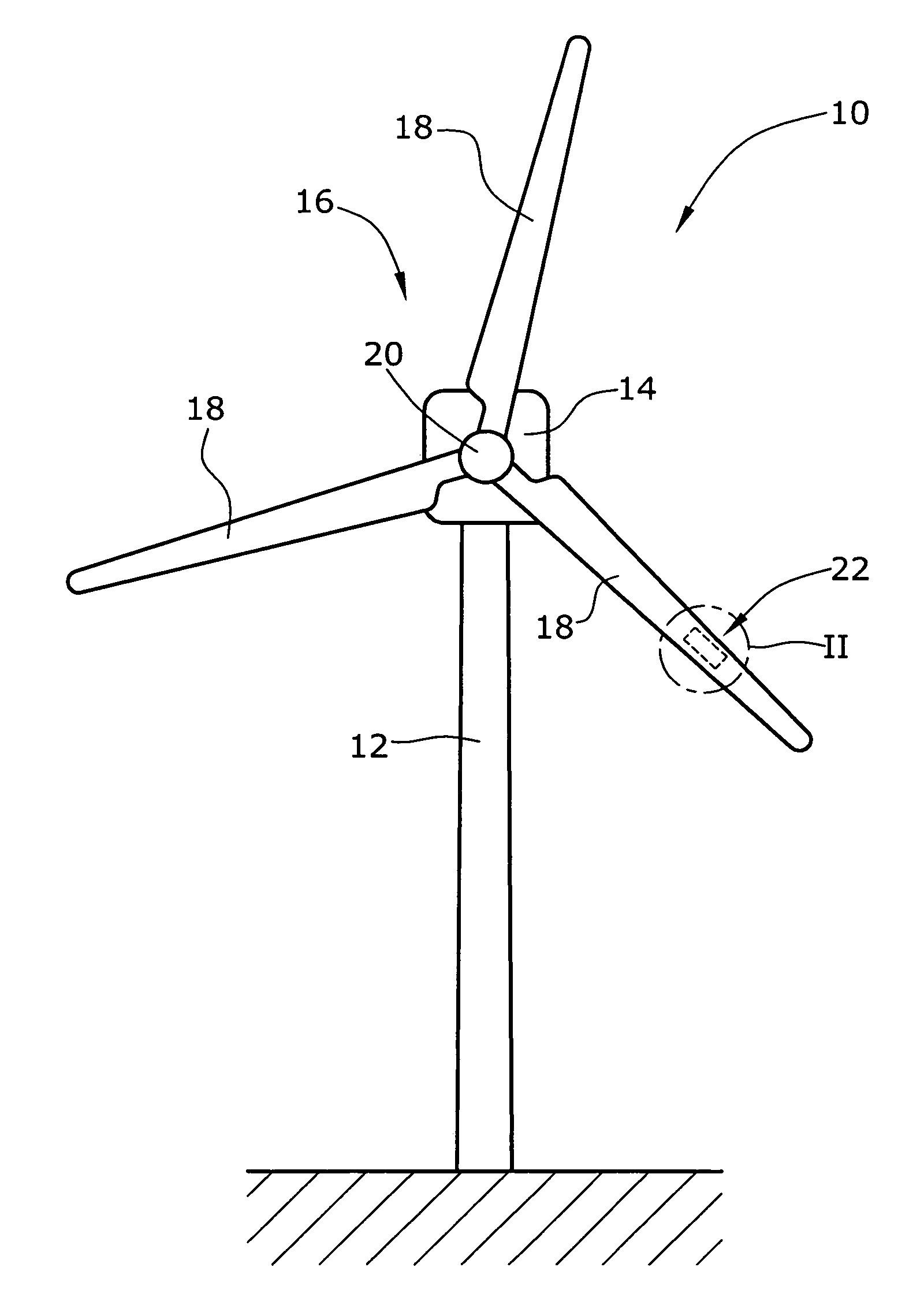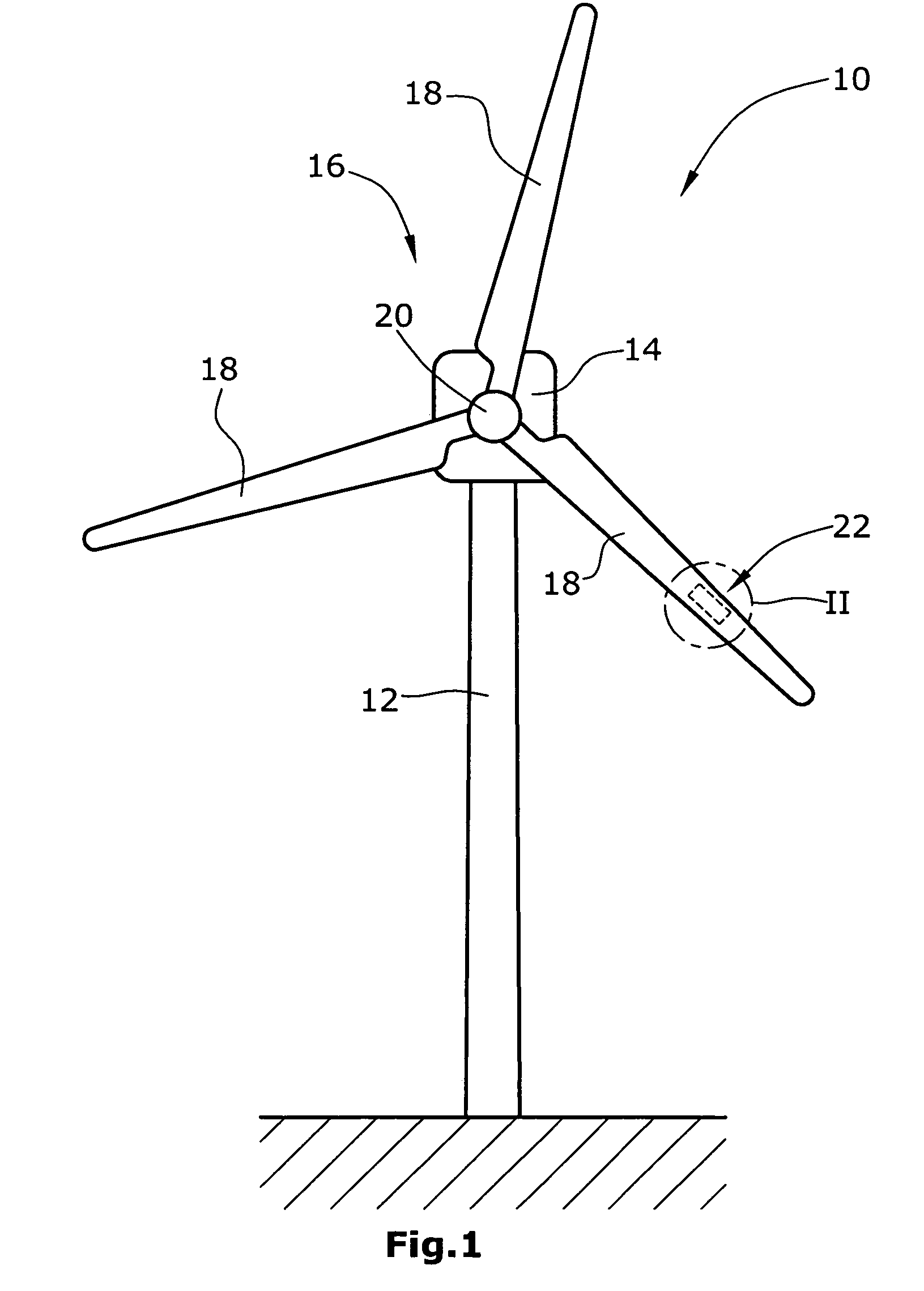Rotor for a wind energy turbine
a technology of wind energy turbine and rotor, which is applied in the direction of generator/motor, machine/engine, electric generator control, etc., can solve the problem of not being able to provide electrical energy to the sensors via cables
- Summary
- Abstract
- Description
- Claims
- Application Information
AI Technical Summary
Benefits of technology
Problems solved by technology
Method used
Image
Examples
Embodiment Construction
[0007]One embodiment of the present invention uses the vibrations of the rotor of the wind energy turbine and, in particular, of the blades of the rotor for converting the mechanical energy, such as the vibrations, into electrical energy. Accordingly, a rotor of a wind energy turbine includes an electromechanical converter which can be e.g. an electromagnetic or piezoelectric vibration converter for converting mechanical energy from the vibrations of the rotor when subjected to wind loads into electrical energy to be supplied to at least one sensor which senses at least one physical value of the rotor, e.g. mechanical stress or the like acting on the rotor blade. This autonomous electrical energy supply eliminates the need for power supply cables in the rotor. Electromechanical converters for converting mechanical energy into electrical energy are known in the art. Typically, those converters are designed as MEMS (Micro Electrical Mechanical Systems) and are made using semiconductor...
PUM
 Login to View More
Login to View More Abstract
Description
Claims
Application Information
 Login to View More
Login to View More - R&D
- Intellectual Property
- Life Sciences
- Materials
- Tech Scout
- Unparalleled Data Quality
- Higher Quality Content
- 60% Fewer Hallucinations
Browse by: Latest US Patents, China's latest patents, Technical Efficacy Thesaurus, Application Domain, Technology Topic, Popular Technical Reports.
© 2025 PatSnap. All rights reserved.Legal|Privacy policy|Modern Slavery Act Transparency Statement|Sitemap|About US| Contact US: help@patsnap.com



